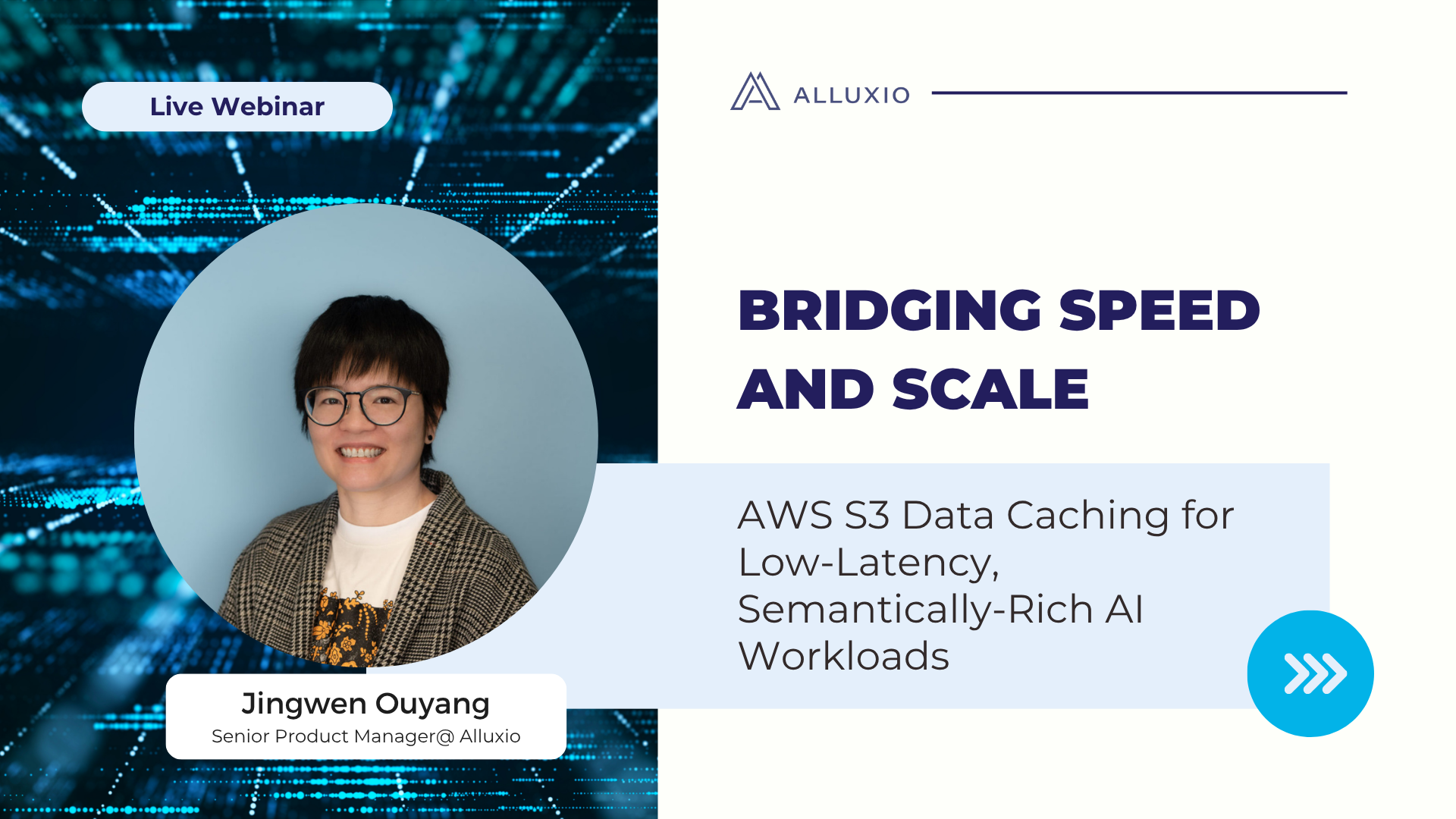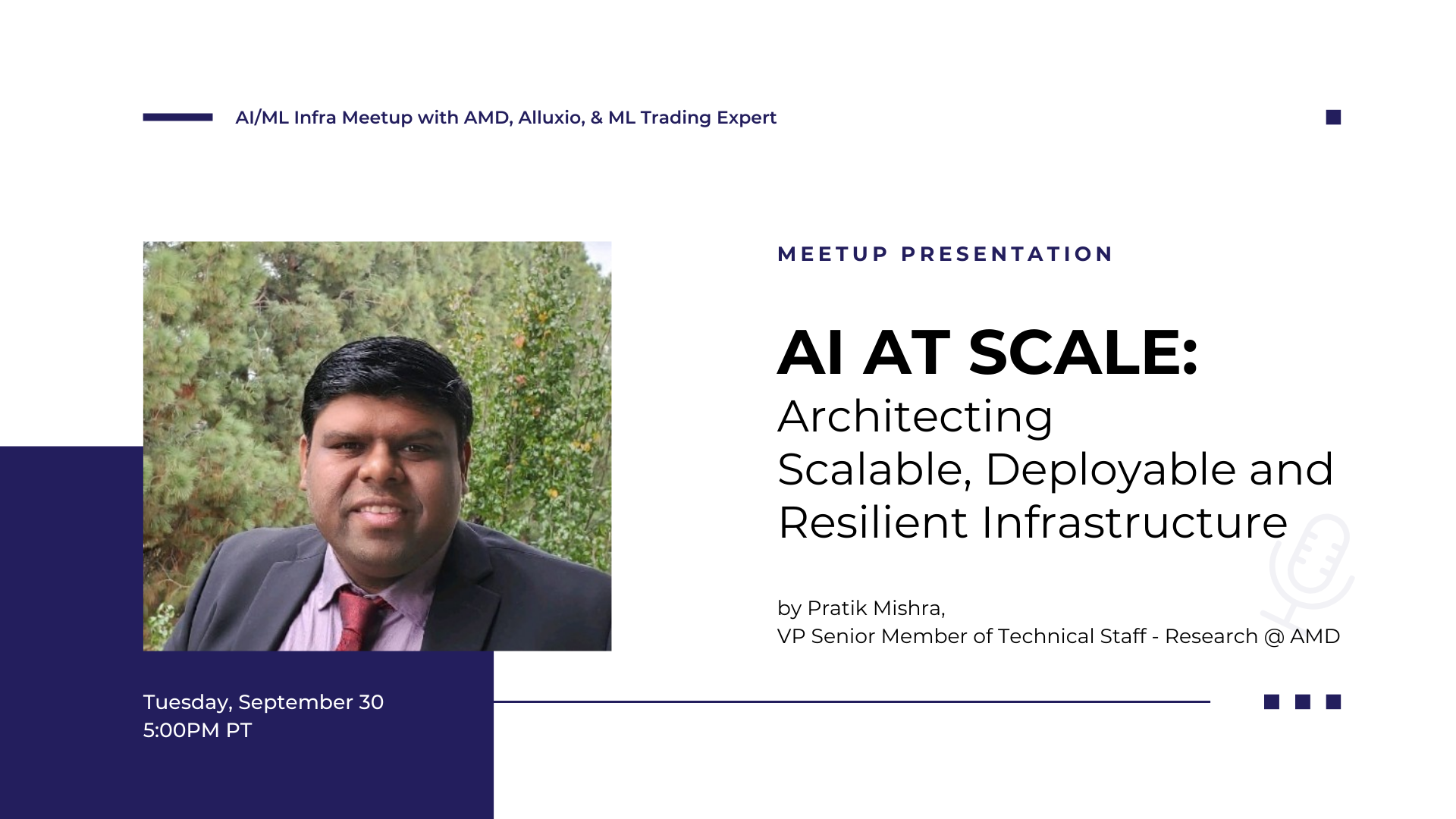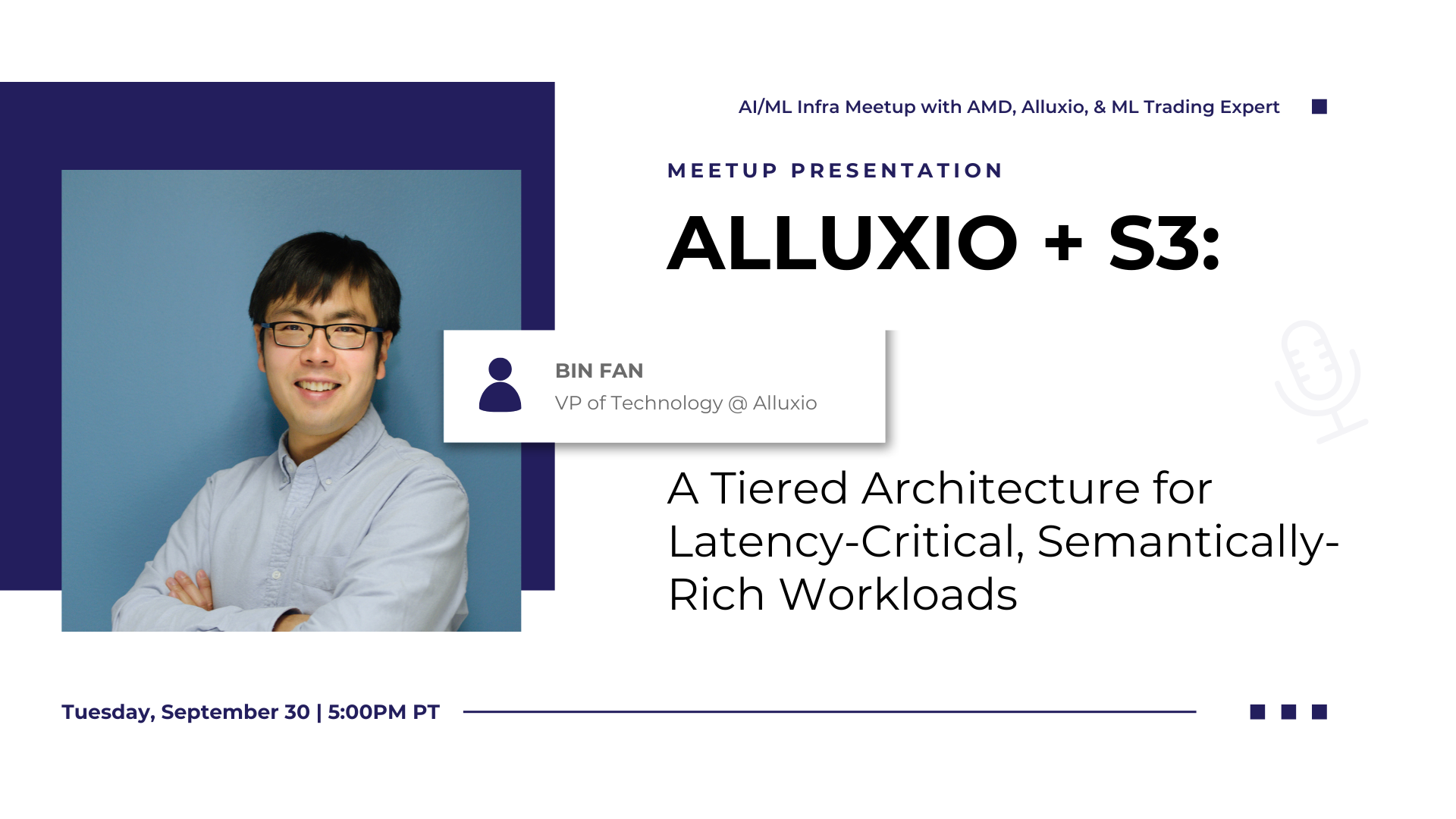Products
Accelerate Cloud Training with Alluxio
October 6, 2021
Alluxio’s capabilities as a Data Orchestration framework have encouraged users to onboard more of their data-driven applications to an Alluxio powered data access layer. Driven by strong interests from our open-source community, the core team of Alluxio started to re-design an efficient and transparent way for users to leverage data orchestration through the POSIX interface. This effort has a lot of progress with the collaboration with engineers from Microsoft, Alibaba and Tencent. Particularly, we have introduced a new JNI-based FUSE implementation to support POSIX data access, created a more efficient way to integrate Alluxio with FUSE service, as well as many improvements in relevant data operations like more efficient distributedLoad, optimizations on listing or calculating directories with a massive amount of files, which are common in model training. We will also share our engineering lessons and roadmap in future releases to support Machine Learning applications.
Alluxio’s capabilities as a Data Orchestration framework have encouraged users to onboard more of their data-driven applications to an Alluxio powered data access layer. Driven by strong interests from our open-source community, the core team of Alluxio started to re-design an efficient and transparent way for users to leverage data orchestration through the POSIX interface. This effort has a lot of progress with the collaboration with engineers from Microsoft, Alibaba and Tencent. Particularly, we have introduced a new JNI-based FUSE implementation to support POSIX data access, created a more efficient way to integrate Alluxio with FUSE service, as well as many improvements in relevant data operations like more efficient distributedLoad, optimizations on listing or calculating directories with a massive amount of files, which are common in model training. We will also share our engineering lessons and roadmap in future releases to support Machine Learning applications.
APACHECON 2021
Alluxio’s capabilities as a Data Orchestration framework have encouraged users to onboard more of their data-driven applications to an Alluxio powered data access layer. Driven by strong interests from our open-source community, the core team of Alluxio started to re-design an efficient and transparent way for users to leverage data orchestration through the POSIX interface. This effort has a lot of progress with the collaboration with engineers from Microsoft, Alibaba and Tencent. Particularly, we have introduced a new JNI-based FUSE implementation to support POSIX data access, created a more efficient way to integrate Alluxio with FUSE service, as well as many improvements in relevant data operations like more efficient distributedLoad, optimizations on listing or calculating directories with a massive amount of files, which are common in model training. We will also share our engineering lessons and roadmap in future releases to support Machine Learning applications.
Video:
Slides:
Videos:
Presentation Slides:
Complete the form below to access the full overview:
.png)
Videos
Bridging Speed and Scale: AWS S3 Data Caching for Low-Latency, Semantically-Rich AI Workloads

Amazon S3 and other cloud object stores have become the de facto storage system for organizations large and small. And it’s no wonder why. Cloud object stores deliver unprecedented flexibility with unlimited capacity that scales on demand and ensures data durability out-of-the-box at unbeatable prices.
Yet as workloads shift toward real-time AI, inference, feature stores, and agentic memory systems, S3’s latency and limited semantics begin to show their limits. In this webinar, you’ll learn how to augment — rather than replace — S3 with a tiered architecture that restores sub-millisecond performance, richer semantics, and high throughput — all while preserving S3’s advantages of low-cost capacity, durability, and operational simplicity.
We’ll walk through:
- The key challenges posed by latency-sensitive, semantically rich workloads (e.g. feature stores, RAG pipelines, write-ahead logs)
- Why “just upgrading storage” isn’t sufficient — the bottlenecks in metadata, object access latency, and write semantics
- How Alluxio transparently layers on top of S3 to provide ultra-low latency caching, append semantics, and zero data migration with both FSx-style POSIX access and S3 API access
- Real-world results: achieving sub-ms TTFB, 90%+ GPU utilization in ML training, 80X faster feature store query response times, and dramatic cost savings from reduced S3 operations
- Trade-offs, deployment patterns, and best practices for integrating this tiered approach in your AI/analytics stack
October 28, 2025
AI/ML Infra Meetup | AI at scale Architecting Scalable, Deployable and Resilient Infrastructure

Pratik Mishra delivered insights on architecting scalable, deployable, and resilient AI infrastructure at scale. His discussion on fault tolerance, checkpoint optimization, and the democratization of AI compute through AMD's open ecosystem resonated strongly with the challenges teams face in production ML deployments.
September 30, 2025
AI/ML Infra Meetup | Alluxio + S3 A Tiered Architecture for Latency-Critical, Semantically-Rich Workloads

In this talk, Bin Fan, VP of Technology at Alluxio, presents on building tiered architectures that bring sub-millisecond latency to S3-based workloads. The comparison showing Alluxio's 45x performance improvement over S3 Standard and 5x over S3 Express One Zone demonstrated the critical role the performance & caching layer plays in modern AI infrastructure.
September 30, 2025
